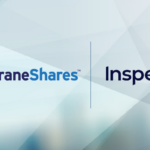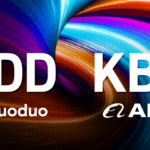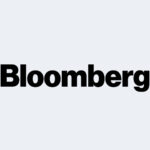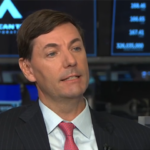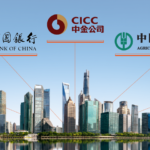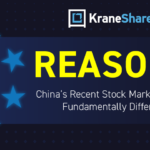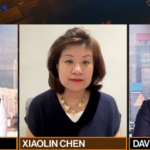For China, the floodgates are about to open
Based on pending index changes, China could become as much as 60% of emerging market indices.
- On June 9th, MSCI will announce whether or not it will include the onshore Chinese markets into their broad indices.
- U.S-listed Chinese companies will be included into broad MSCI indices starting in November 2015.
- Taiwan and South Korea are approaching developed market status, which could make additional room for more China in emerging market indices.
- KraneShares has developed a suite of ETFs to capture these changes today, ahead of their implementation.
As China’s markets continue to open-up, there has been increased focus on its weighting within international indices. China has been underrepresented in these indices due to its historic limitations on foreign investment. With these limitations rapidly being lifted, the timeline for China’s full inclusion within international indices is starting to solidify. Additionally, China could see a further increase within emerging market indices as South Korea and Taiwan could be upgraded to developed market status in the coming years.
When looking at the MSCI All Country World Index1, China’s underrepresentation in global indices becomes readily apparent. China–the second largest economy in the world by GDP– is just 2.4%1 of the MSCI All Country World Index; by comparison, Switzerland–whose GDP is 10 times smaller2–represents 3.2% of this same index.1
Historically MSCI, a leading provider of index solutions globally, has limited their definition of China to Hong Kong listed companies only. This definition excludes the onshore markets of Shanghai and Shenzhen and also U.S-listed Chinese companies. Broadening index exposure to include these segments of the Chinese market is a complicated endeavor. There are multiple share classes and listing exchanges to be considered with varying degrees of international accessibility. As index providers broaden their definition of China, these previously excluded segments of its markets may see significant inflows in the coming months and years upon their inclusion.
To put the potential inflows into perspective, there are currently $9.5 trillion dollars benchmarked to all MSCI indices3 and $1.7 trillion benchmarked to the MSCI Emerging Markets Index alone4. China is currently 23% of the MSCI Emerging Markets Index4, upon full inclusion it could grow to be as much as 60%. Full inclusion could mean hundreds of billions of dollars of inflows into the newly included segments.
These changes present an opportunity for investors today to gain exposure to the segments of China that will be affected before the inclusion takes place. Below we have provided an overview of the two segments that will be affected by the change and their current status with MSCI. The onshore equity market’s inclusion decision will be announced on June 9th, U.S-listed Chinese companies have already been approved to be included starting in November 2015.
Segment #1: The Onshore Equity Market
The Shanghai and Shenzhen Stock Exchanges are the world’s fourth and seventh largest stock exchanges globally with over $8 trillion of aggregate market cap, which represents 11% of the world’s market cap5. The onshore Chinese stock markets were historically excluded from global indices due to limited access for foreign investors.
The real catalyst for onshore market inclusion came in the form of the Shanghai-Hong Kong Stock Connect, which launched in November 2014. Foreign investors can now trade between Hong Kong and Shanghai without prior approval or restrictive quota limits. Moreover, the Stock Connect’s launch also clarified questions on capital gains tax. Due to these developments, MSCI put the onshore market on review for inclusion last year.
These changes represent hundreds of billions of dollars that would need to be reallocated to China. For this reason MSCI will likely stagger the inclusion of the onshore market over several years. MSCI may choose to wait for the Shenzhen–Hong Kong Stock Connect program to officially begin. Market rumors point to a mid-August commencement for this program.
| Today | Inclusion of the onshore markets | New China % of MSCI Emerging Markets |
| 23% | +18% | 41% |
MSCI Data as of March 31, 2015
On May 26th, FTSE, a global leader in indexing, announced the launch of a new emerging market index including a 5% weight to onshore China equities within their FTSE Emerging Index. Managers with the ability to add onshore equities can adjust to the new index in advance of FTSE’s official China upgrade. The FTSE decision comes just before MSCI’s June 9th announcement. MSCI’s decision will be more definitive than FTSE’s in that ETFs, index funds and institutions benchmarked to MSCI will be required to adhere to their decision.
Segment #2: U.S. listed Chinese companies
The fifteen largest U.S-listed Chinese companies will be added to MSCI’s definition of China in two stages with stage one commencing in November of this year and stage two starting in May 2016. Our calculations estimate $10 billion in ETF and index fund assets will flow into the stocks6. There is an additional $66 billion of active mutual funds and institutional assets that would need to flow into the stocks to remain benchmark neutral6. The aggregate market cap of these stocks is $600 billion7, making this change so large that MSCI decided to stagger the inclusion over two rebalances.
| Today | Inclusion of the onshore markets | Inclusion of U.S-listed Chinese Companies | New China % of MSCI Emerging Markets |
| 23% | +18% | +3% | 44% |
MSCI Data as of March 31, 2015
The Potential upgrade of South Korea and Taiwan
The final move to a 60% China allocation within emerging markets comes from the potential upgrade of South Korea and Taiwan to developed market status. GDP per capita is the primary criteria index providers use to determine if a country is an emerging or developed market, though foreign accessibility also weighs prominently. South Korea and Taiwan both qualify for developed market status by the first GDP criteria. They both have rules however, that limit foreign investors from transacting in their currencies. Since foreign accessibility can be subjective there is no consensus amongst the index providers on South Korea’s market status. FTSE has upgraded South Korea to Developed Market status, while MSCI still counts the country as an emerging market.
Within the MSCI Emerging Market Index both South Korea and Taiwan have a 10% weighting8. We believe one or both countries could be upgraded by MSCI within the coming years though neither country is currently under review by MSCI for upgrade.
| Today | Inclusion of the onshore markets | Inclusion of U.S-listed Chinese Companies | South Korea Upgrade | Taiwan Upgrade | New China % of MSCI Emerging Markets |
| 23% | +18% | +3% | +12% | +10% | 66% |
MSCI Data as of March 31, 2015. Calculated by KraneShares
Investors will soon have a greater China allocation within their portfolios based on the definitive index changes coming this year and the forthcoming potential changes we outlined above. We believe the vast majority of investors will remain idle as these mandatory changes take place in their portfolios. Proactive investors can potentially benefit from a first mover advantage by taking an early position in the affected segments of China’s markets before their peers are rebalanced into them.
For investors looking for exposure to both segments of China’s markets we outlined above, the KraneShares FTSE Emerging Markets Plus ETF (ticker : KEMP) may be a potential solution. KEMP provides access to both U.S-listed Chinese companies and the onshore Chinese markets within a broad emerging market strategy.
For investors looking for exposure to U.S-listed Chinese companies that will be included into broad MSCI indices starting in November 2015 the KraneShares CSI China Internet ETF (ticker : KWEB) may be a potential solution.
For investors looking for exposure to the onshore markets, the KraneShares Bosera China A ETF (ticker : KBA) tracks an MSCI index based on the concept of the integrated MSCI China equity universe with mainland Chinese securities included.
- The MSCI All Country World Index captures large and mid cap representation across 23 Developed Markets (DM) and 23 Emerging Markets (EM) countries. With 2,466 constituents, the index covers approximately 85% of the global investable equity opportunity set. – Country weightings from MSCI as of 4/30/2015
- GDP data from the World Bank as of 2013
- MSCI benchmarked assets from MSCI as of 3/31/2015
- The MSCI Emerging Markets Index captures large and mid cap representation across 23 Emerging Markets (EM) countries*. With 835 constituents, the index covers approximately 85% of the free float-adjusted market capitalization in each country – Benchmarked assets from MSCI as of 3/31/2015. Country weightings from MSCI as of 4/30/2015
- Data from World Exchanges as of 1/31/2015. Based on equity exchanges with reported data.
- Potential inclusion data calculated based off amount of assets benchmarked to affected indices by China weighting as of 3/31/2015
- Data from Bloomberg as of 4/30/2015
- Country weightings from MSCI as of 4/30/2015

